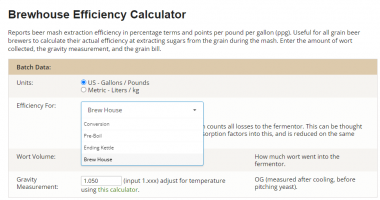Teufelhunde
Well-Known Member
- Joined
- Jan 4, 2020
- Messages
- 520
- Reaction score
- 479
Did my second all grain batch in the Brewzilla this morning. First batch, I was only .01 off on all my numbers for an efficiency of 72.74 when brewfather estimates 75 for the Brewzilla. Today, waaaaaay low like .09 for an efficiency of 65.6.
As far as I remember, my processes were the same. Where do I begin to troubleshoot to find the issue? If I have to pay a couple bucks more for grain to do a batch, it's not the end of the world, but I WOULD like to be able to hit close to the numbers so that the beer is what the recipe says it is.
TIA for any input
Lon
As far as I remember, my processes were the same. Where do I begin to troubleshoot to find the issue? If I have to pay a couple bucks more for grain to do a batch, it's not the end of the world, but I WOULD like to be able to hit close to the numbers so that the beer is what the recipe says it is.
TIA for any input
Lon













































![Craft A Brew - Safale BE-256 Yeast - Fermentis - Belgian Ale Dry Yeast - For Belgian & Strong Ales - Ingredients for Home Brewing - Beer Making Supplies - [3 Pack]](https://m.media-amazon.com/images/I/51bcKEwQmWL._SL500_.jpg)












